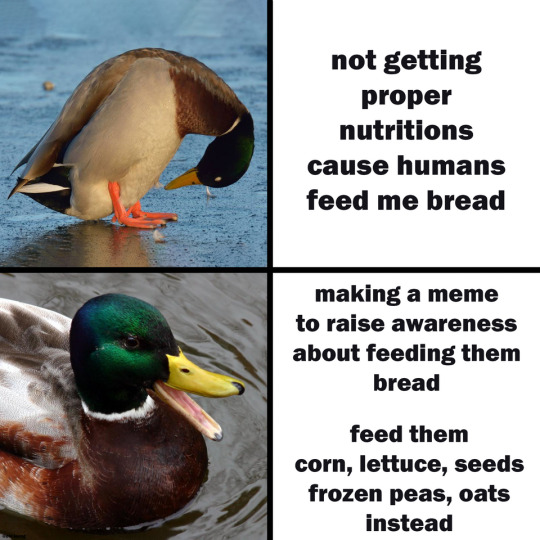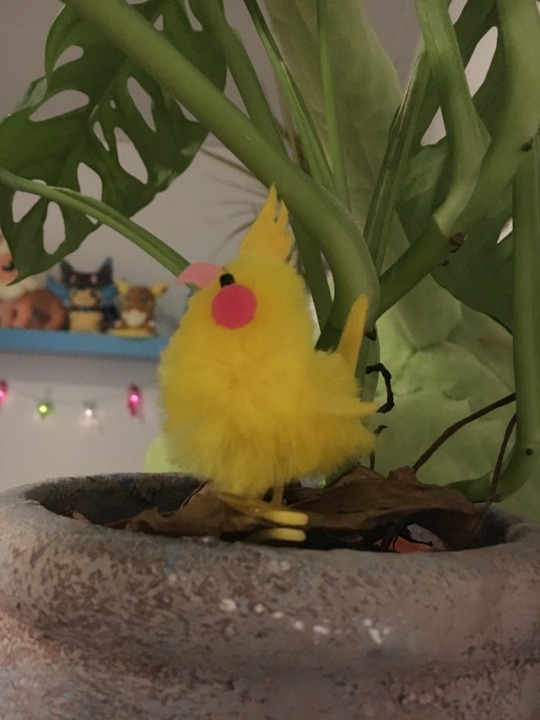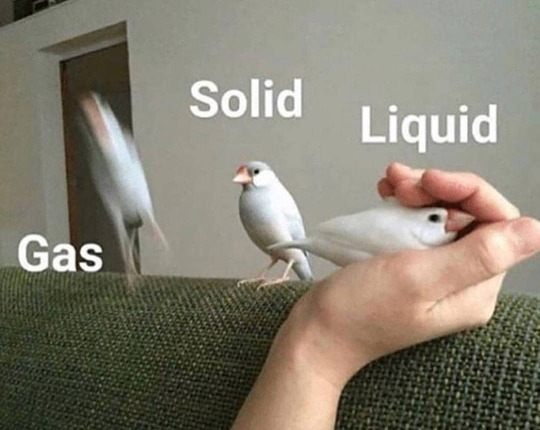Previously lookitspuck. I love birds. I have my own litte 'tiel boy, Salami. I also share photos and videos from a sanctuary that I volunteer at.
Don't wanna be here? Send us removal request.
Photo

Need to be mindful for our feathered friends!
197K notes
·
View notes
Photo




Thick Brushstrokes Form Plump Songbirds in Oil Paintings by Angela Moulton
23K notes
·
View notes
Video
559K notes
·
View notes
Text
BREAKING NEWS!
Local budgie arrested for Crimes.

A local parakeet was taken into custody early Sunday morning after complaints of Excessive Nonsense and Being a Butthole.
3K notes
·
View notes
Text
Me: trying to silently opening a candy bar
My parrot: watching me intently as he raises his foot to his beak to pantomime the act of eating a candy bar while making distressingly realistic chewing noises and not breaking eye contact
44K notes
·
View notes
Photo

Exploring! @wild–mountain–thyme‘s Dragon posed for this.
221 notes
·
View notes
Photo






made some Easter chicks into pichu!
162 notes
·
View notes
Text
Me: offers my cockatiel fresh, healthy vegetables Her: disgusting. how dare you. don’t come near me with that. Me: eats one corn chip Her:

1K notes
·
View notes
Text
I’ve never been one to do this, but I’m so desperate right now. I’ve had my cockatiel “Flyer” for over 10 years. She is 12 years old and my favorite thing in the whole world.


She’s at an emergency pet hospital right now because she is egg bound (which means an egg is stuck inside her, in her case it won’t leave the chloecha.) Right now the hope is that with supplements and supervision, she’ll be able to pass the egg herself within 24 hours of when I brought her in. However, if that doesn’t work they may need to resort to manually removing it from her body. All of these things cost a lot of money, and I am a college student and can’t afford to do everything in my power to save her. If you have it in your heart to help in any way, either in emotional support, financial support, or simply reblogging this, I’d be so thankful.
My PayPal: https://www.paypal.me/marissastifter
Thank you ❤️
424 notes
·
View notes
Text



I’m a fool for not posting Kisses pics when she herself is a work of art
191 notes
·
View notes
Photo

Disclaimer: I made this avian body condition score chart based on a similar one I illustrated for my raptor center. While I have been working closely with birds for years and years and just started veterinary med school, I have another 3.5 years to go before I am a full, licensed veterinarian, let alone one who is specialized to see avian patients. And even if I was, it would still be unsafe, inappropriate and illegal for me to give medical advice about your pet over the Internet, so if you have a medical concern about your bird (be it raptor, chicken, parrot, or otherwise), please do the right thing and take it to your veterinarian. He/she has years (at least 7) of education, training, and experience that you will not get from Dr. Google. Diagnoses can not, and should never, be made by asking your tumblr followers for their opinions, googling, etc. Please make the right decisions for your fur/feather/scale child!
An avian patient’s general body condition can be evaluated by palpating, or thoroughly feeling, its breast (pectoral) muscles. This will help subjectively determine the ratio of muscle mass to the sternum or keel (breast) bone that these muscles attach to. If a bit of a depression isn’t felt on either side (i.e. the breast is very rounded), the bird is likely overweight; alternatively, if there is an extreme depression (such that the keel bone feels “sharp”), the bird is underweight. In addition, the bone should be straight, and any deviations (e.g. bends/abnormal shapes, cracks, etc.) suggest improper nutrition during the bird’s early life, or a previous traumatic injury that has healed. Keel bone deviations are found in the majority of commercial laying hens, especially due to collisions and falls that occur in “enriched” cages.
Some veterinarians may use a 9-point scale system during a physical exam instead, but the same ideas still apply. As I said above, I use this 5-point system with the raptors I work with at my facility. To minimize stress, part of the preliminary training we do with each of our raptors when they first arrive, after learning to stand on a glove, is to remain calm and still while its handler palpates its keel. This eliminates the need for stressfully restraining the bird, so that it can participate in its own health check process by allowing its handler to touch it (wild raptors are not social, and do NOT enjoy human contact), and receive a food reward in the process. Most parrot owners will train this behaviour as well for appointments with their veterinarian, and I have actually trained my chickens to stand still while I palpate their keel too! No chasing/catching and towel-wrapping necessary. It’s a pretty fun and very useful behaviour to train - the borbs get free food just for letting you poke their boobs?
Please do not use or re-post without permission.
References:
Avian Medicine: Principles and Applications - by Ritchie, Harrison and Harrison (1994)
https://www.wsava.org/WSAVA/media/Arpita-and-Emma-editorial/Body-Condition-Score-Dog.pdf
https://www.wsava.org/WSAVA/media/PDF_old/Body-condition-score-chart-cats.pdf
402 notes
·
View notes
Text
My parrot has a vague understanding of the word “no.” He knows to stop doing what he’s doing when he hears it, and he knows how to say it.
He knows it’s a word that is used when he’s doing something he shouldn’t be doing. However, being told “no” doesn’t make him stop doing it in future.
If he’s ever out of my sight or if I’m not paying attention, I know exactly when he’s doing something bad.
Because he says “no” to himself as he does it.
93K notes
·
View notes
Text





a pensive boi asks for scritches, more at 6,
347 notes
·
View notes




